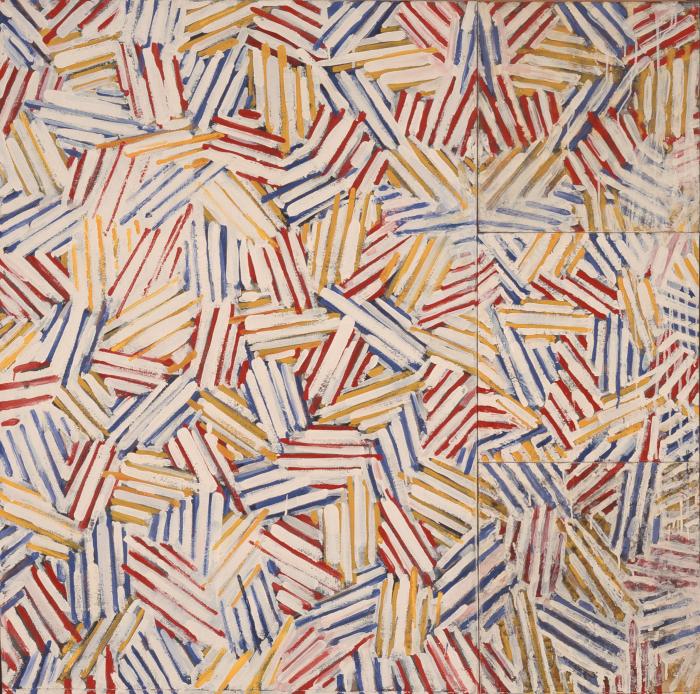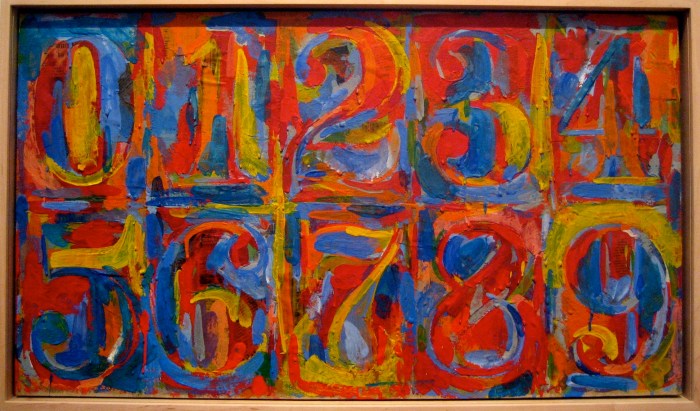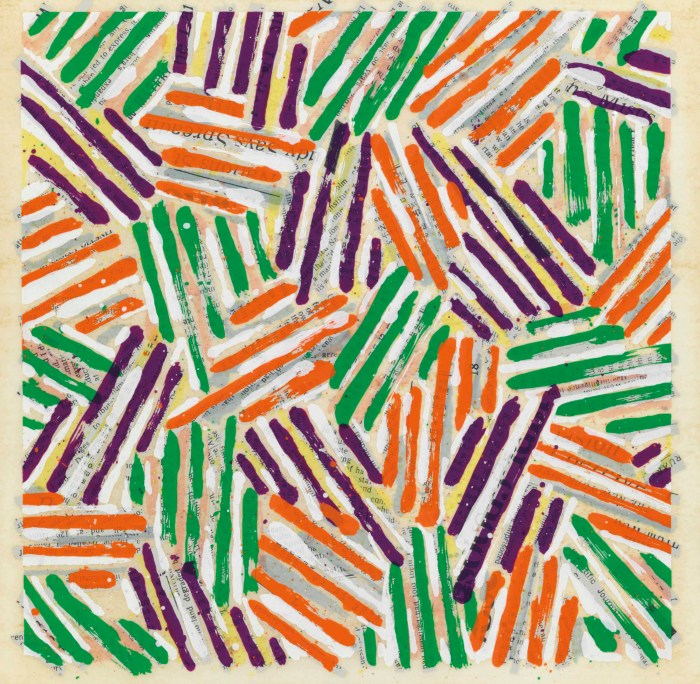Using collage and encaustic what artist painted numbers in color – In the realm of art, the combination of collage and encaustic techniques has captivated artists and enthusiasts alike. Using Collage and Encaustic: Exploring Numbers in Color delves into the unique artistic expression that emerges when these techniques converge, examining the significance of numbers and the masterful use of color by renowned artists.
Throughout history, artists have employed collage and encaustic to create compelling and thought-provoking works. This exploration unveils the distinct qualities and characteristics of these techniques, showcasing their versatility and expressive potential.
Collage and Encaustic: A Unique Artistic Technique: Using Collage And Encaustic What Artist Painted Numbers In Color

Collage and encaustic is a unique artistic technique that combines the use of collage and encaustic painting. Collage involves assembling different materials, such as paper, fabric, or photographs, to create a single artwork. Encaustic painting is a technique that uses heated beeswax mixed with pigments to create vibrant and textured artworks.
Artists have used collage and encaustic for centuries to create a wide range of artworks. Some notable examples include:
- Kurt Schwitters, who created abstract collages using found objects and materials.
- Joseph Cornell, who created surrealist collages and assemblages using found objects and ephemera.
- Jasper Johns, who incorporated collage and encaustic into his iconic flag paintings.
- Robert Rauschenberg, who used collage and encaustic to create his groundbreaking combine paintings.
Collage and encaustic art is characterized by its unique qualities, including:
- Texture: The use of different materials in collage creates a variety of textures that can add depth and interest to the artwork.
- Color: Encaustic paint is known for its vibrant and luminous colors, which can be used to create dramatic effects.
- Symbolism: Collage and encaustic art can be used to convey a variety of symbolic meanings, depending on the materials and images used.
The Significance of Numbers in Collage and Encaustic Art, Using collage and encaustic what artist painted numbers in color
Numbers play a significant role in collage and encaustic art. Artists have incorporated numbers into their work for a variety of reasons, including:
- Symbolism: Numbers can be used to represent a variety of concepts, such as time, order, and chaos.
- Emphasis: Numbers can be used to draw attention to a particular element in the artwork.
- Composition: Numbers can be used to create a sense of balance and harmony in the artwork.
Some notable artists who have incorporated numbers into their collage and encaustic artworks include:
- Jasper Johns, who used numbers in his iconic flag paintings.
- Robert Rauschenberg, who used numbers in his combine paintings.
- Ed Ruscha, who created a series of paintings based on numbers.
- Jenny Holzer, who uses numbers in her text-based artworks.
Color in Collage and Encaustic Art
Color plays a vital role in collage and encaustic art. Artists use color to create a variety of effects, including:
- Depth: Color can be used to create a sense of depth and space in the artwork.
- Texture: Color can be used to create a variety of textures, from smooth and glossy to rough and textured.
- Emotion: Color can be used to evoke a variety of emotions, from joy and happiness to sadness and anger.
Some notable artists who have mastered the use of color in collage and encaustic art include:
- Henri Matisse, who used vibrant colors in his collages and paintings.
- Pablo Picasso, who used color to create a sense of space and depth in his collages.
- Joan Miró, who used color to create a sense of playfulness and whimsy in his collages.
- Louise Nevelson, who used black and white to create dramatic and powerful collages.
Methods and Techniques in Collage and Encaustic Art
Collage and encaustic art can be created using a variety of methods and techniques. Some common methods include:
- Assemblage: Assemblage is a technique that involves assembling different objects and materials to create a three-dimensional artwork.
- Decoupage: Decoupage is a technique that involves gluing paper or fabric to a surface to create a decorative effect.
- Encaustic painting: Encaustic painting is a technique that uses heated beeswax mixed with pigments to create vibrant and textured artworks.
Artists often combine different methods and techniques to create unique and innovative collage and encaustic artworks.
Contemporary Applications of Collage and Encaustic Art
Collage and encaustic art are still widely used by contemporary artists. Some emerging trends and styles in the field include:
- Digital collage: Digital collage is a technique that uses digital images to create collages.
- Mixed media collage: Mixed media collage is a technique that combines collage with other media, such as painting, drawing, or sculpture.
- Encaustic collage: Encaustic collage is a technique that combines collage with encaustic painting.
Contemporary artists are using collage and encaustic art to explore a wide range of themes and ideas, from personal narratives to social and political issues.
Helpful Answers
What is the significance of numbers in collage and encaustic art?
Numbers often carry symbolic meanings and can represent concepts such as time, order, and numerology, adding depth and complexity to the artwork.
How does color play a role in collage and encaustic art?
Color is a powerful tool that artists use to create depth, texture, and emotion. The combination of collage and encaustic allows for vibrant and layered color effects.
Name some renowned artists who have incorporated collage and encaustic in their work.
Notable artists include Robert Rauschenberg, Jasper Johns, and Louise Bourgeois, who have explored the expressive possibilities of these techniques.


